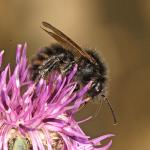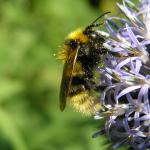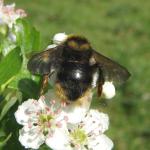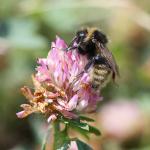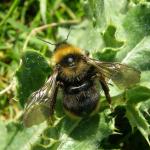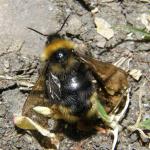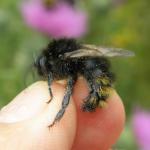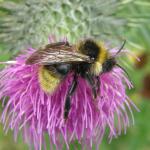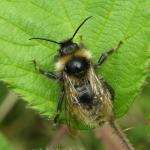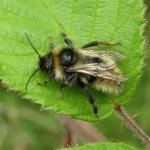Psithyrus varius (LEPELETIER, 1832); Psithyrus flavus (PEREZ, 1884); Psithyrus flavothoracicus (HOFFER 1889); Psithyrus susterai (TKALCU, 1959); Psithyrus susterianus (TKALCU, 1977)
Synonymy from Paul Williams http://www.nhm.ac.uk/research-curation/research/projects/bombus/ps.html#campestris
Keys and general biology are found in Sladen (1912), Free & Butler (1959), Alford (1975) and Prŷs-Jones & Corbet (1991). Until recently this species was known as Psithyrus campestris, but Psithyrus has now been reduced to a subgenus within Bombus. A very variable species, colours ranging from forms which are all-black to those where the black is broken by two yellow stripes on the thorax and a yellowish tail. This is a cuckoo-bumblebee which is well-known to usurp the nests of Bombus pascuorum and has been recorded in nests of B. humilis as well. It is likely that it will attack all the carder bumblebees (B. humilis, B. muscorum, B. pascuorum, B. ruderarius and B. sylvarum).
This species is distributed widely throughout almost the entire area covered by this Atlas. It is not currently recorded in the far north of the Highland Region of Scotland. It is widespread and often common in Europe; middle and northern latitudes of Asia, eastwards to Kamchatka (Løken, 1973).
The bee is not regarded as being scarce or threatened.
This cuckoo-bee occurs in a wide variety of habitats.
Over-wintered females can be found from late April onwards, males and new females in July to September.
Visits are made to a very wide variety of flowers.
None specifically recorded in Britain or Ireland.
Profile written:
Proofed: March 2012


